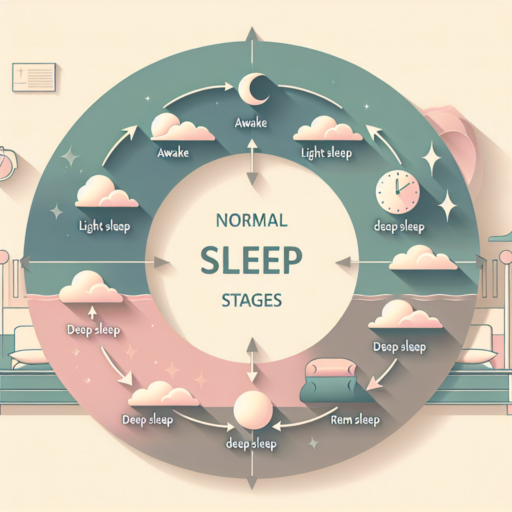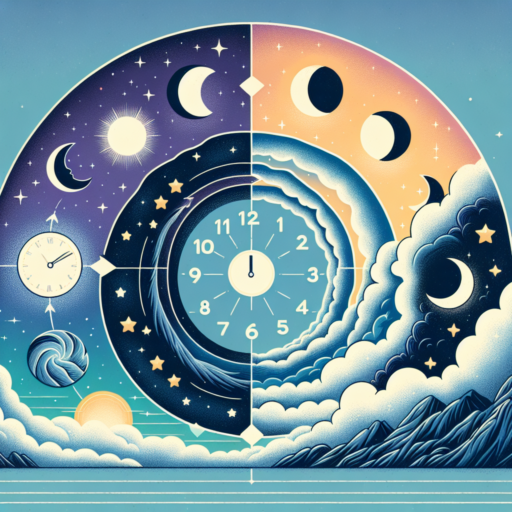How much of each sleep stage is normal?
Understanding the structure of sleep is crucial for examining how much of each sleep stage is regarded as normal. Sleep is divided into several stages, each serving different physiological and neurological purposes. These stages are broadly classified into Rapid Eye Movement (REM) sleep and Non-REM (NREM) sleep, which include three sub-stages: N1, N2, and N3.
NREM Sleep constitutes the majority of a night’s sleep, approximately 75-80%. This part of sleep is further broken down into three stages:
- N1 (Light Sleep): Roughly 5-10% of total sleep time is spent in this stage, acting as the transition phase into deeper sleep.
- N2 (Deeper Sleep): Occupying around 45-55% of sleep, this stage is crucial for memory consolidation and processing of the day’s learning.
- N3 (Deep Sleep): Comprising 13-23% of sleep, this is the most restorative phase, crucial for physical recovery and growth hormone release.
On the other hand, REM Sleep accounts for about 20-25% of a night’s sleep. This stage is associated with vivid dreaming and plays a significant role in emotional regulation and memory. The duration of REM sleep increases with each cycle, peaking in the second half of the night. Assessing the balance between these sleep stages and their normal distribution can reveal insights into overall sleep quality and potential health implications.
What is better, REM or deep sleep?
Understanding the importance of sleep stages is essential for appreciating how our bodies rest and recover. REM (Rapid Eye Movement) sleep and deep sleep serve different, crucial functions in our nightly rest cycles. While it’s not simply a matter of which is better, each stage has unique benefits that contribute to overall health and well-being.
REM sleep is often associated with vivid dreaming, but its significance extends far beyond nighttime stories. This phase is critical for cognitive functions such as memory consolidation, learning, and emotional processing. During REM sleep, the brain is almost as active as it is while awake, fostering creative problem-solving and memory reinforcement.
On the other hand, deep sleep, or slow-wave sleep, is the most restorative sleep stage. It plays a pivotal role in physical recovery, growth hormone release, and immune system strengthening. Deep sleep is when the body repairs muscles and tissues, cleanses the brain of toxins, and replenishes energy for the next day. It’s the foundation for physical health and energy.
How many hours of REM sleep do you need?
Understanding the importance of REM (Rapid Eye Movement) sleep is crucial for optimal health and well-being. REM sleep, often referred to as the stage of deep sleep where dreaming occurs, plays a vital role in the processes of memory consolidation, emotional regulation, and cognitive performance. Figuring out the exact amount of REM sleep one needs can be pivotal in enhancing overall sleep quality.
On average, adults require between 7 to 9 hours of sleep per night, with about 20-25% of that time spent in the REM stage. This translates to roughly 1.5 to 2 hours of REM sleep each night. However, it’s important to note that these needs can vary based on age, lifestyle, and individual health conditions. For example, newborns and infants need much more REM sleep, up to 50% of their sleep time, to support rapid mental and physical development.
Factors such as stress, sleep disorders, and lifestyle choices can significantly impact the amount of REM sleep you are able to attain. Ensuring a healthy sleep routine and environment can aid in maximizing the quality and quantity of REM sleep. This includes maintaining a consistent sleep schedule, creating a comfortable and quiet sleep environment, and avoiding stimulants such as caffeine and electronics before bedtime.
What is the normal pattern of sleep?
Understanding the normal pattern of sleep is crucial for recognizing how our bodies rest and rejuvenate. The typical sleep cycle follows a predictable pattern, moving through various stages that are essential for mental and physical health. These stages are broadly classified into two main types: Non-REM (Rapid Eye Movement) and REM sleep.
Stages of Non-REM Sleep
The initial phases of sleep fall under Non-REM, starting with stage 1, which is the transition from wakefulness to sleep. It’s a short period of light sleep where you can be easily awakened. Progressing into stage 2, the body begins to prepare for deep sleep by lowering its temperature and slowing down the heart rate. In stages 3 and 4, often referred to collectively as deep sleep, the body undergoes significant restorative processes. Muscles relax, tissues grow and repair, and energy for the next day is restored.
REM Sleep Phase
Following the deep sleep stages of Non-REM, the sleep cycle enters REM sleep approximately 90 minutes after falling asleep. This phase is characterized by increased brain activity, rapid eye movements, and vivid dreams. It’s a critical period for processing emotions, consolidating memories, and learning. The body stays almost paralyzed during REM sleep, presumably to prevent acting out dreams, while the mind remains highly active.
Throughout the night, these cycles repeat approximately every 90 to 110 minutes. The proportion of time spent in each stage changes, with more deep sleep occurring in the first half of the night and an increase in REM sleep towards the morning. Understanding these patterns can be the key to addressing many sleep disorders and improving overall health and well-being.










